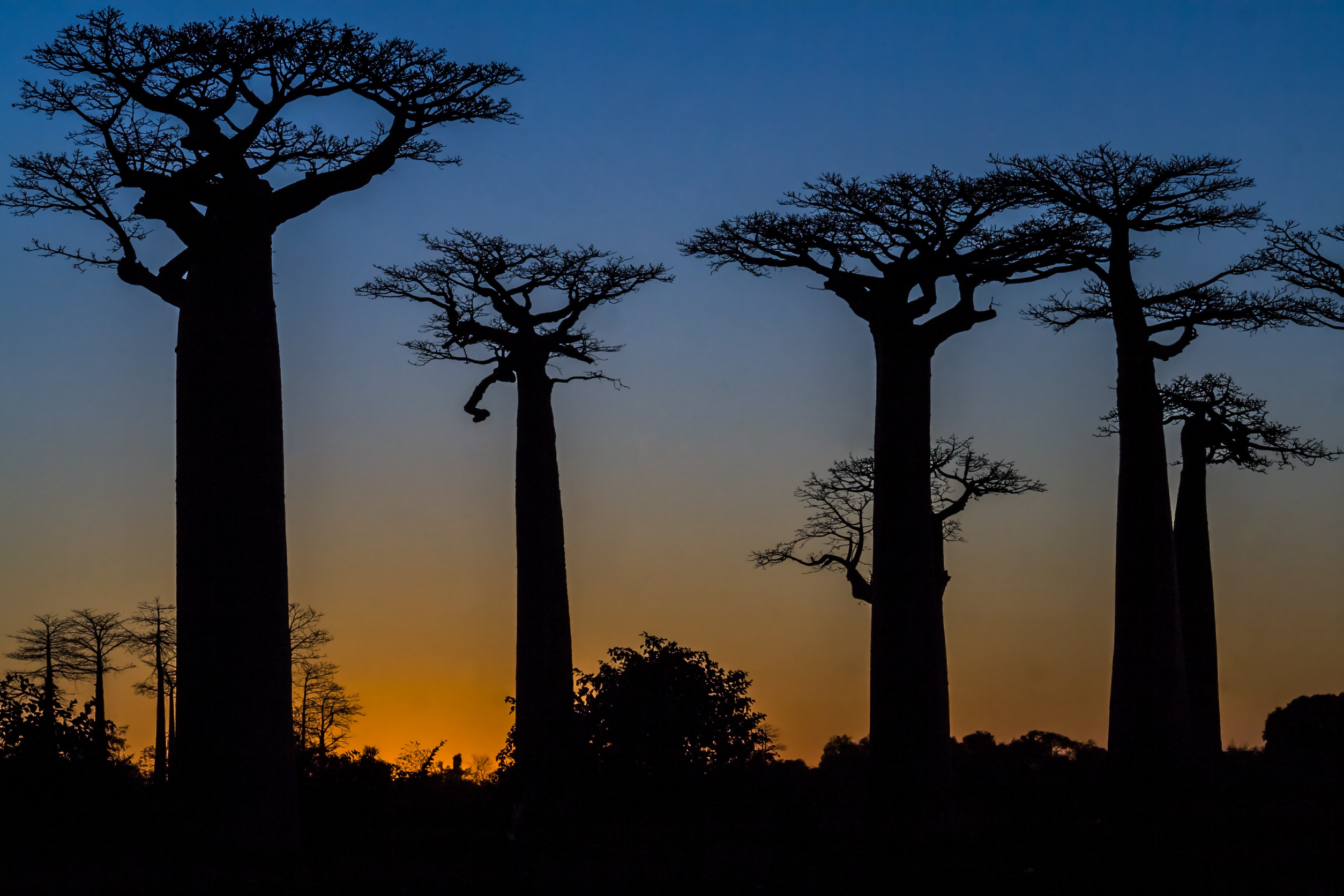Madagascar Awaits: Experience the Ultimate Adventure in Nature’s Paradise

Revered as the 'Galapagos of the Indian Ocean,' Madagascar emerges as a pristine island haven, harbouring a rich tapestry of fauna and flora exclusive to its shores. This jewel of biodiversity stands among the globe's recognised Biodiversity Hotspots, boasting a captivating array of endemic wildlife. Beyond its natural inhabitants, Madagascar is an idyllic backdrop for safari enthusiasts and beach lovers.
Madagascar's allure is twofold, offering both opulent luxury and uncharted adventures that transport visitors through time. Wander along serene, white-sand beaches at dusk, engage with marine life in the vibrant coral reefs, and encounter the island's famed lemurs. Culminate your day with local delicacies against the backdrop of the vast, azure ocean, encapsulating pure contentment.
Indeed, Madagascar is a premier destination for travellers. Delve into the allure of smaller isles such as Nosy Be and Île Sainte-Marie, embark on thrilling treks, navigate through varied terrains from lush forests to stark deserts, and indulge in aquatic adventures. For those drawn to serene beaches, secluded coves, and stunning natural beauty, Madagascar is akin to paradise on Earth. Top Five Reasons to Visit Madagascar:
Unveiling the Pristine Shores of Madagascar
Madagascar challenges the quintessential beach paradises of Mauritius, Seychelles, and the Maldives with its untouched coastal gems. The mainland, home to spectacular beaches like Tulear and Ifaty, alongside the quaint islets, offers equally breathtaking seaside escapes.
Nosy Be, affectionately termed "Big Island," is renowned for its spectacular coral reefs, fine sandy beaches, and verdant mangroves, painting a picturesque seascape reminiscent of a Pirates of the Caribbean scene.
Further enriching Madagascar's coastal allure is Île aux Nattes or Nosy Nato, a haven characterised by its fine, sandy expanses, gently swaying palm trees, and crystal-clear waters, crafting an unparalleled island retreat.
A Sanctuary for Wildlife
Madagascar is a wildlife sanctuary, with the World Wildlife Fund highlighting that approximately 95% of its reptiles, 89% of its plant species, and 92% of its mammalian life are exclusive to the island. Among its unique inhabitants are the Silky Sifaka lemur, dubbed 'The Angel of the Forest' for its ethereal white coat, and the critically endangered Ploughshare tortoise.
The island's diverse ecosystems are teeming with lemurs, from the iconic ring-tailed Lemur Catta to lesser-known species, best observed in their natural settings such as Ranomafana and Andasibe National Parks, and the less traversed islets of Nosy Komba and Aye-Aye Island.
Madagascar's biodiversity extends to its birdlife, with enthusiasts encouraged to keep binoculars at hand to spot some of the 285 bird species that call the island home, including 100 endemic species.
The Surfing Enclave
Attention surf enthusiasts! Madagascar and its neighbouring islets boast incredible surf locales suitable for both novices and seasoned surfers. The best waves are often found on the island's southwest coast, where numerous premium surfing spots are located. Accessing these areas typically requires a boat journey, offering an added snorkelling adventure near the reefs.
Corre stands out as an outstanding location that caters to beginners and those at an intermediate level. For a quintessential island experience involving lounging on the sands, snorkelling in transparent waters, and surfing, Lavanono is your go-to spot. Ambila Lamentsa, with its beautiful coastline and diverse wave sizes, welcomes newcomers and those with more experience in surfing.
For those seeking isolation and challenging waves, Ifaty Beach presents an ideal spot. The surf here, best near the coral reefs, is more suited for adept surfers. Additional spots for the experienced include Flameballs, Little Teaupoo, and Mangoro, which are known for their advanced breaks.
The Flora and Landscapes
Explore the ancient Avenue of the Baobabs, where towering deciduous giants, some over 800 years old and reaching heights of up to 30 feet, line the landscape. Madagascar is home to an impressive array of baobab species, six of the eight known globally, and approximately 12,000 species of plants, 70% to 80% unique to the island. A notable highlight is 860 orchid species scattered throughout the region.
Embark on a journey to Tsingy de Bemaraha National Park to witness its remarkable flora and landscapes, including the awe-inspiring limestone towers and spires known as 'The Stone Forest'. The park is a rich source of biodiversity, featuring a variety of plant life, fascinating wildlife, concealed caves, slender canyons, and picturesque hiking paths, making it an extraordinary destination for visitors.
A Whale-Watching Expedition
From mid-June to September, Madagascar hosts pods of migrating humpback whales. The whales go to warmer waters to breed and calve before leaving again. While their breaching and lob tailing can be seen from the shore, responsible whale-watching boat tours provide an exciting perspective of their antics.
The whales are often found basking in the bay that separates Madagascar from Nosy Be but tend to follow a path around the island. Nosy Be is also a fantastic place to swim with Whale Sharks, known as the largest fish in the sea.
In addition to humpback whales, Madagascar, specifically Nosy Be and Nosy Iranja, is known to house a rare species of whale, the Omura’s Whale. This is a real treat for whale enthusiasts.
Conclusion: Madagascar Awaits
Madagascar is more than just a place to visit; it is an adventure into a world where the natural world is king, and there is always something exciting to discover. Whether you're lounging on a secluded beach, trekking through lush rainforests, diving into an underwater wonderland, or simply enjoying the warmth of Malagasy hospitality, Madagascar offers something for every traveller. It's a place where the wonders of nature are on full display, inviting explorers to discover its secrets.
Madagascar beckons with its unique wildlife, breathtaking landscapes, and vibrant cultures. It's a call to adventure, a chance to explore one of the last untouched paradises on Earth. So, why go to Madagascar? Because it's a once-in-a-lifetime experience that promises to captivate, inspire, and transform.
Practical Travel Insights for the Conscious Explorer
- Best Time to Visit: From April to October, the dry season offers the most comfortable climate for exploring Madagascar's wonders.
- Getting Around: Renting a car or using local taxis are popular options, but always ensure they are reputable to contribute positively to the local economy.
- Local Customs: Embrace Malagasy hospitality by learning a few phrases in the local language and respecting traditional customs and etiquette.
FAQS
What are the unique species found only in Madagascar?
Madagascar hosts unique species like the Silky Sifaka lemur and the Ploughshare tortoise. About 95% of its reptiles, 89% of its plants, and 92% of its mammals are endemic to the island.
How can tourists visit Madagascar responsibly?
Tourists can visit responsibly by choosing eco-friendly tours, respecting wildlife, supporting local economies, and minimising their environmental impact.
What are Madagascar's most famous natural attractions?
Famous attractions include the Avenue of the Baobabs, Tsingy de Bemaraha National Park, pristine beaches like those on Nosy Be, and Ranomafana and Andasibe national parks for wildlife viewing.
How does Madagascar contribute to global biodiversity?
Madagascar is a Biodiversity Hotspot, contributing unique endemic species to global biodiversity and playing a crucial role in ecological balance.
What conservation efforts are underway in Madagascar?
Conservation efforts include establishing protected areas, habitat restoration, combating deforestation, and promoting sustainable tourism to protect Madagascar's biodiversity.
Get Your Madagascar eVisa
Step1: Complete the online application form by providing your passport details.
Step2: Safely process your payment using your credit card through our secure online platform.
Step3: Monitor your email for payment verification and the electronic dispatch of your eVisa.
